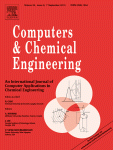Affiliation: Collaboratory for Process & Dynamic Systems Research, U.S. Department of Energy, National Energy Technology Laboratory, 3610 Collins Ferry Road, Morgantown, WV 26507-0880, United States
Reference: Zitney S.E. (2010), Process/Equipment co-simulation for design and analysis of advanced energy systems, Computers and Chemical Engineering, vol. 34, issue 9, pp. 1532-1542. https://doi.org/10.1016/j.compchemeng.2010.02.011
Abstract: “The grand challenge facing the power and energy industries is the development of efficient, environmentally friendly, and affordable technologies for next-generation energy systems. To provide solutions for energy and the environment, the U.S. Department of Energy’s (DOE) National Energy Technology Laboratory (NETL) and its research partners in industry and academia are relying increasingly on the use of sophisticated computer-aided process design and optimization tools. In this paper, we describe recent progress toward developing an Advanced Process Engineering Co-Simulator (APECS) for the high-fidelity design, analysis, and optimization of energy plants. The APECS software system combines steady-state process simulation with multiphysics-based equipment simulations, such as those based on computational fluid dynamics (CFD)…”
Comments: the paper collects the work done in APECS since it started, giving also the context in which APECS was launched. Since APECS relies on CAPE-OPEN as the interoperability standard, CAPE-OPEN is referred to numerous times and used to wrap CFD models as well as reduced order models or to drive stochastic modelling and optimization. To this day APECS remains the most impressive utilization of CAPE-OPEN within a single R&D project.

